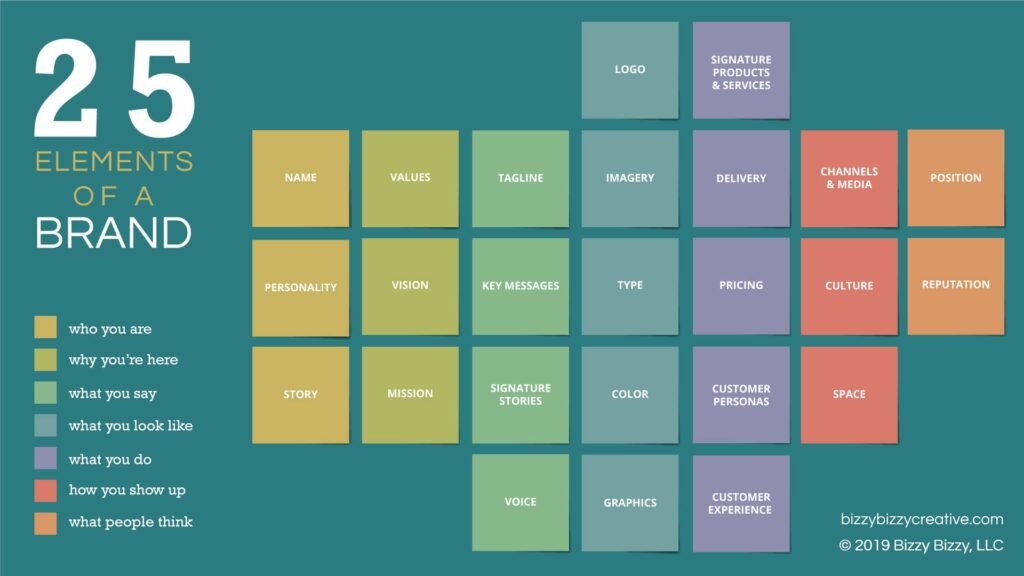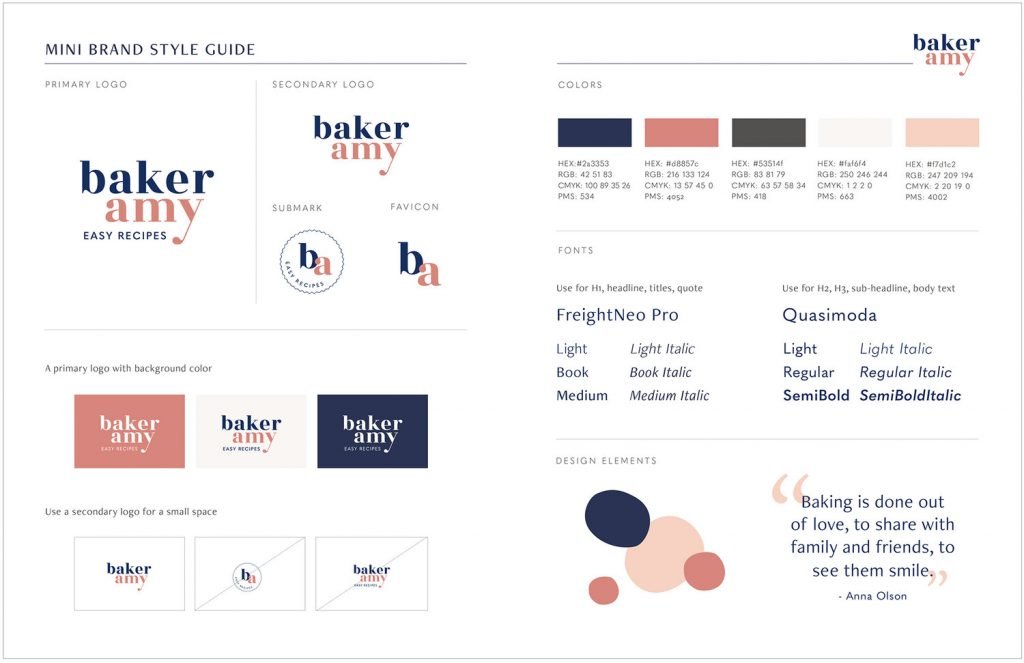Staying relevant as a business is essential for growth and longevity. And to do that, you should be willing to adapt and evolve. So sometimes, a strategic overhaul of your brand’s identity is necessary.
Whether you’re a startup looking to make a splash or an established company seeking to refresh your image, rebranding offers a transformative opportunity to connect with your audience, redefine your purpose, and propel your business toward new horizons.
But rebranding can go horribly wrong if not taken seriously. It’s not the investment of time and money that’s at stake, but your whole reputation.
So in this blog post, I’ll delve into the art and science of rebranding, and share the guidance you need to get it right.
Disclaimer: If you buy any products through links on this site, I may earn a commission. But it doesn't make any difference to your cost, and it helps me keep this blog running. So you could always read my articles for free.
What is rebranding?
When a brand changes any or all of its branding elements, it’s called rebranding. These elements could include the logo, fonts, colors, name, packaging, and more.
However, rebranding isn’t just about the change. The company that rebrands makes a considerable investment to make sure that its target audience of current or potential customers knows about the change.
The idea is for this change to have a neutral or positive impact on brand perception and sales.
Your rebrand can be as small or large as you determine, from minorly tweaking your tagline to changing all of it down to the business name. So there are two main types of rebranding:
Partial rebrand
As I said before, rebranding is not always a complete redoing of all your branding elements. Sometimes, all you need is a small update to represent what has changed in your company, industry, or consumer preferences.
This small update is called partial rebranding, or a brand refresh. It involves modifying one or more specific brand components.
For example, it can mean changing your business name, customizing your logo, altering your color palette, or redesigning your website. A great example of a brand refresh comes from the car rental company Hertz.

As you can see, not much has changed between their old logo and the new logo, except the fact that the new one looks more modern and suitable for the current times.
Full rebrand
In full rebranding, your brand goes through a complete overall and turns into a completely different company. It’s a total revision of your marketing approach.
You’ll give a lot of time to reconsider what your business stands for, your value proposition, and your target audience. Once you regain a clear sense of your new identity, you’ll build a new branding plan that conveys what your business represents through words and graphics.
While rethinking your whole branding isn’t always required, it can work wonders when done the right way, at the right time, and with the right intentions.
The biggest proof of this is About.com, a content-based website that rebranded to Dotdash, a parent company with niche websites that reach 100 million readers a month.
However, it also involves some serious risks. One of those is the cost and human resources you put into the project. Even if you are making a very small change to your overall brand, you’ll still need considerable marketing investment to promote your new look.
But an even bigger risk is that your new branding may end up alienating customers instead of winning them back. Even the biggest of the world’s brands have faced some sort of rebranding crisis in their lifetime, and have then found themselves switching back to their old brand, wasting millions of dollars in the process.
That’s not to say that you shouldn’t try. With careful planning and diligence, you can certainly reduce the risks and create a positive impact with your new brand.
When to consider rebranding?
Brands often misjudge that they should rethink their image only because they have stuck to the same one for many years. But a brand is not like a smartphone that you can or should change every few years down the road.
On the other end of the spectrum, there are many companies that wait too long to review and revise their brand identity. They are too scared to take the risk, which becomes the key reason for their eventual downfall.
So which side are you on? Is it the right time to rebrand? How would you know? Here are some signs that can help you identify whether it’s a good idea for you to consider rebranding at this time. You should tilt on the side of rebranding if any of the following is true.
You’re changing your products or audience
Stay with me here. I am not saying you need to rebrand just because you’re launching a couple of new products related to your previous products. Or because you’ve decided to sell your product in a new size, shape, or color.
But if your new products are making you enter new territories in terms of your industry and audience, a rebrand is a good idea to capture customer interest.
For example, when Dunkin Donuts had been selling more than just donuts, the company realized that its name was holding it back. So they dropped the word ‘donuts’ from its name, becoming just Dunkin.

This rebranding reason also applies to pricing. For example, if your company has been known for an economical and affordable product and you want to offer the premium version of your product to customers who want luxury goods, it warrants rebranding.
That’s why Toyota doesn’t sell its high-end cars under the name Toyota. It created a new brand Lexus exclusively for this purpose.
Likewise, using new raw materials or ingredients can also make a good case for rebranding. Let’s say you’re a soap brand that has switched to organic, all-natural ingredients. So it’s reasonable that you’ll need a new branding strategy.
Your business is adopting a new direction
Has your company’s foundation changed? Restructuring, policy changes, mergers, acquisitions, or new leadership — each of these events indicates that your business is sailing in a new direction. Rebranding can help you spread the word.
For example, when Sandoz and Ciba Geigy merged, the company formed by their merger was renamed Novartis. This change sent the message that it was no longer just a chemical and pharmaceutical business. It was a life brand.
Your current branding isn’t working
Once upon a time, Coca-Cola lost a huge chunk of its audience because of confusing brand packaging.
When it tried to unify all its products in an effort to make them look like they’re part of one single brand, it became hard for buyers to distinguish between the different Coke variants. The result? Coke had to change it all again.

The point is, that some brands are parading around with branding so wrong that they’re practically screaming for a rebrand.
Without even realizing it, they may be sending mixed messages, vague about what they stand for, rubbing their audience the wrong way, or committing some other branding blunder.
Whatever the reason, the sooner they can recognize what’s wrong with their branding, the sooner they can fix it.
For example, a common branding mistake is imitating your competitors to such an extent that you come across as very similar to them. When it becomes difficult for consumers to set you apart, a rebrand can help you create a unique identity.
Your current brand reputation is tarnished
Did your company come under fire for a mishap that can’t be taken back? If you’re suffering from too much bad publicity, it might be time to start with a new name, logo, and image to separate your business from the negative connotations.
Now, this approach isn’t perfect. You won’t be able to fix your public image instantly, as some people may have strong memories.
But if you admit your mistakes, apologize for them, and keep trying to make amends sincerely and transparently, there’s still hope for your business to rise above the situation and come out stronger on the other side.
Your brand doesn’t align with modern times
If none of the above reasons apply to you, there’s still a chance that you need to rebrand. That’s because time waits for no one.
The world’s visual preferences are always evolving. Certain appearances are related to specific time periods.
What looks modern and evergreen today may not stay that way down the line. At some point, your business should rebrand. And that point can come after a few years, or even a few decades.
Case in point: Radio Shack. To get rid of the outdated word ‘radio’ from its name, the company changed itself to The Shack, even though the move couldn’t keep the business afloat.
So it’s a good idea to rebrand your business periodically. But the exact time intervals will be determined by your target audience and industry trends.
When not to rebrand
Knowing when not to rebrand your company is just as important as knowing when you should. Many companies fall into the trap of customizing their brand elements without a strong justification. And it’s not something that you should get into when you’re not fully ready. Here are some common scenarios that usually don’t require rebranding.
Change in leadership
So you’ve joined the leadership team at a new company and you’re looking to shake things up. I don’t blame you. It’s normal to want to make your mark and impress stakeholders. But rebranding is too much of a risk to start with when you haven’t taken the time to fully understand what makes the existing brand tick.
Your fresh perspective as an outsider may be an asset that lets you look at things more objectively. But it may very well be a liability preventing you from getting under the skin of your business.
Having a high-potential vision for a brand’s future is possible only when you have a thorough knowledge of its past. If you don’t know where a company’s origins are and how it has changed over the years, you can’t see where it needs to be.
Your competitor has rebranded
Keeping tabs on your competitors is a good thing. But just because they are moving in a certain direction doesn’t mean that you should do the same. And that applies to rebranding too. Rebranding should always have a list of solid reasons backing it up.
You may witness the rebranding of your competitors, but you may not have a clear idea of why they’re doing it. And whether their reasons for rebranding apply to your business. A knee-jerk reaction will only lead to a big waste of time and money, along with a loss of precious brand equity.
Just because…
As I said before, if your brand has started feeling a bit outdated, it may merit a rebrand. But you can’t take that decision based only on a gut feeling. Having a clear sense of how your customers view your brand and why is essential before you go about tweaking it.
Take Royal Mail, for example. The company invested £1.5m in rebranding as Consignia. But it learned the hard way that a mistake has been made. Then it spent another £1m to reverse the damage done.

You should always consider and crunch your numbers on how rebranding will impact your revenues. Otherwise, there is no point. If there’s no solid ground for rebranding, it’s likely to turn into a disaster.
How to rebrand your company
Rebranding demands a huge investment. You shouldn’t take it casually. And you shouldn’t rush it.
Proper groundwork is essential before you sit down with your designers and other team members to collaborate on updating your brand.
This involves having clarity on your rebranding goals, the elements that need to change, the identity you’re striving to build, and how rebranding fits your larger business policies.
Audit your current branding
Conduct a careful assessment of your current brand and brand equity. Identify the problems with your existing brand. Analyze all the components of your brand to find out what can stay the same and what needs to be changed.
The idea is to determine the strengths and weaknesses of your brand strategy. This helps increase your chances of a successful rebranding and decrease the risk.

To help you stay on top of things, here are the key brand aspects you should put under scrutiny.
- Brand name
- Market positioning
- Social media presence
- Logo
- Tagline
- Color scheme
- In-store decor
- Typography
- Marketing and advertising campaigns
- Influencer collaborations
- Content development
- Voice and tone
- Website/app design
- Sounds and audio files
- Branding videos
To start analyzing your strengths and weaknesses, start by viewing your sales and marketing data. Check your traffic reports, the performance of your marketing campaigns, and social media analytics. See which promotion channels get you the best results and why.
As you do that, consider what type of audience loves your current brand and who you want to capture more. Then, determine what branding changes will you need to make that happen.
Examine competitor brands
When it comes to branding, it’s not enough to build a perfect plan from scratch. Understanding your competitor’s branding and what to do with that data is also crucial.
The idea is not just to copy what your competitors are doing. What you’re really doing is fishing for bad ideas to avoid and good ideas to take inspiration from. And you also want to see the patterns and commonalities among different competitors.
So you can adopt the same approach to open yourself to the same benefits, or deviate from this pattern to make yourself stand out.
For example, if most companies in your space are using the color orange, you can do the same, or try to use something drastically different.
There are also a lot more data points you can gather by analyzing your competition, from their pricing plans to their spending on different advertising channels.
Conduct audience research
Whatever theories or ideas you have about rebranding your business, you can refine and narrow them down by gathering information directly from your customers. You want to know how they view your brand and whether they agree that your branding needs to change.
To get a variety of opinions, don’t just limit your research to your customers. Talk to everyone, including your employees, stakeholders, and potential customers.
There are many ways to conduct this type of research. Depending on the size of your business, you can conduct one-on-one interviews, consumer surveys, and focus groups.
Large companies can typically afford focus groups or related techniques, while methods such as online surveys or split tests help small businesses identify their branding issues and solutions. Here are some key questions to ask your audience:
- On a scale of 1-10, how would you rate our branding? How can we improve it?
- What words come to your mind to describe our branding and voice?
- What would you say to a friend about our brand?
- In your opinion, who is our target audience?
- What emotions does our brand make you feel?
- How has your experience been with our brand? Does our branding match this experience?
If you have no idea who you should target for your rebranding, you may need some additional tests to figure out the customer groups most likely to be interested in your products and services. And base your branding choices according to their preferences.
Reconsider your brand values and personality
Now it’s time to start resharing your new personality. What type of brand do you want to be? What do you wish customers would think and feel about your brand?
Sit down with your team and have a solid and deep internal discussion. Here are the key aspects to consider?
- What’s our unique value proposition?
- How are we different from competitors?
- What are our mission, vision, and values?
- What problems do we solve for our customers?
- What’s our story?
Think of your brand as a human being. What type of person is it? How’d it feel to talk to this person at a social gathering? For example, would this person be casual and playful, or serious and formal?
Feeling stuck with this exercise? No worries. Take a look at the adjectives below and select the ones that best fit your new brand.

Shortlisting the key adjectives that match your brand is important because they will tie into tangible brand elements such as your color choice and typography.
Create a brief for what needs to change
If you’re about to rebrand, you’ll probably decide to work with a branding agency, or your own in-house team. Whatever the case, you need to write a clear and detailed brief.
This brief will outline exactly what you want from rebranding and the scope of work involved. Your rebranding brief should include:
- A summary of the problems with your existing brand
- A description of your new branding
- Your target buyer persona
- Rebranding strategies to plan to implement
- Core brand messages
- Activities that are going to be a part of your rebranding process
Create a mood board
The design brief that you’re creating can be improved even more by including a mood board. This mood board is a place where you collect the concepts and ideas you have shortlisted for your new brand personality.

For example, you can add certain illustrations that reflect the essence of your revised branding. Or a particular type of photography that you admire in another brand?
Take some time to research and gather examples that will help you and your team understand the new branding direction you are taking.
It can take a few weeks to keep tweaking your mood board, adding things you like, and removing those you don’t. Examine your color palette, photography, logo concepts, and other elements.
Keep customizing until your mood board has a consistent look and feel. And it gives a vibe that you are happy with. Curation tools like Pinterest and whiteboard tools like Miro can help you collate your concepts and turn them into shareable mood boards.
Test your new concepts
Now it’s time to start creating the new assets that are part of your rebrand. These may include brand messages, graphics, logos, and other imagery.
Rebranding is a collaborative process. So you should be ready to get your hands dirty and work closely with your team.
Once your team has come up with mockup designs for new logos, packaging, or store decor, take feedback from everyone involved before coming to a conclusion.
Besides taking opinions from your team, you can also get your customers involved to give inputs on the new creative concepts that you are testing. A creative survey can be created to show respondents multiple designs and ask them to choose favorites.
If you want to be more objective and scientific about this whole process, the alternative approach is ‘mondaic testing’. This involves presenting each concept to a separate set of people, and evaluating which idea has the best score.
Update your brand guidelines and toolkit
Once your visual assets and brand identity have been finalized, you should record all the information related to your new brand in a guide. This guide is known as a brand style guide, or brand kit.

The idea is to have a resource that serves as a bible for anyone who’ll do any kind of advertising or marketing for your business, including the press. Your brand style guidelines should contain:
- A summary of your brand identity
- Your logo variations and instructions on using them
- Your color palette and typography
- Instructions for alignment and layout
- Brand iconography and illustrations
- Examples of your branding on packaging, website, ads, etc.
Your brand style guide is a must for conveying your rebranding approach to all the stakeholders and ensuring that everyone is on the same page.
Change elements that don’t align with the rebrand
Now that everything is finalized and ready to be used, the next step is execution. This means identifying all the places where your old brand assets and messages are being used and replacing them with new ones.
Make a list of all the branding tasks that need to be done. Then assign them to your team members and include the deadline by which the tasks should be completed. You can use any of the well-known project management tools for this purpose, such as Trello, Asana, or Notion.
Also, make sure to schedule weekly check-in sessions with your team. So that every team member can keep the company updated on the progress of his assigned tasks. Once everything is done, it’s time to show off your new brand to the public.
Launch your newly renovated brand
Congrats! We have reached the final step. This is where all the hard work done so far will come to fruition. You’re now launching your rebrand to your own company and the general public. Both of these events will be scheduled at separate times.
Your internal brand launch will include a company-wide meeting and presentation. Use this opportunity to explain the rebrand to your employees. Introduce your new brand elements and the reasons for rebranding. Plus, remind your employees to change their individual brand assets as per the new brand, such as:
- email signatures
- business cards and letterheads
- personal social banners
- company presentation templates
Not everyone at your company has been involved in the rebranding project. So this gives your employees the basics they need to know before they interact with your customers or anyone else outside the organization.
Once your whole organization is versed with your new branding, the next step is to launch it to the public. This is when your new packaging arrives at stores, your new website goes live, and new ads begin running. Reach your audience where they are.
You want to make as much noise as you can to make everyone aware of what has changed. Distribute press releases, give away merchandise, host relaunch parties, and get people excited about this new chapter in your company’s journey.
Wrapping up: the art of rebranding
Rebranding represents a dynamic strategy for companies to adapt, evolve, and resonate with changing consumer preferences, market landscapes, and organizational visions.
Through careful planning, innovative design, and strategic communication, rebranding endeavors have the power to invigorate businesses, revitalize brand identities, and foster stronger connections with audiences.
While the process may present challenges and risks, the potential rewards in terms of renewed relevance, enhanced competitiveness, and sustained growth make rebranding a compelling proposition for forward-thinking organizations seeking to thrive in today’s ever-evolving marketplace.
As businesses continue to navigate the complexities of the modern business environment, the art of rebranding remains a vital tool in shaping narratives, inspiring loyalty, and ultimately, driving long-term success.





